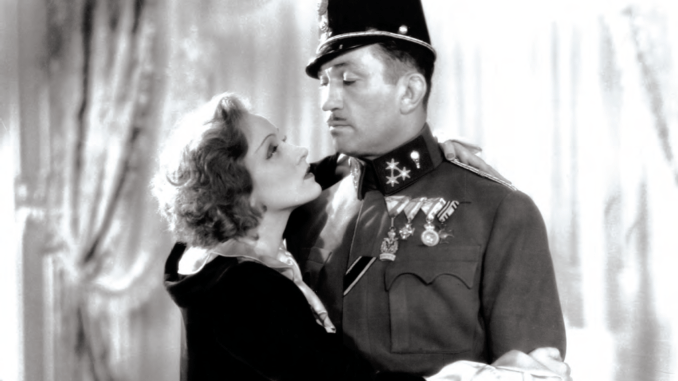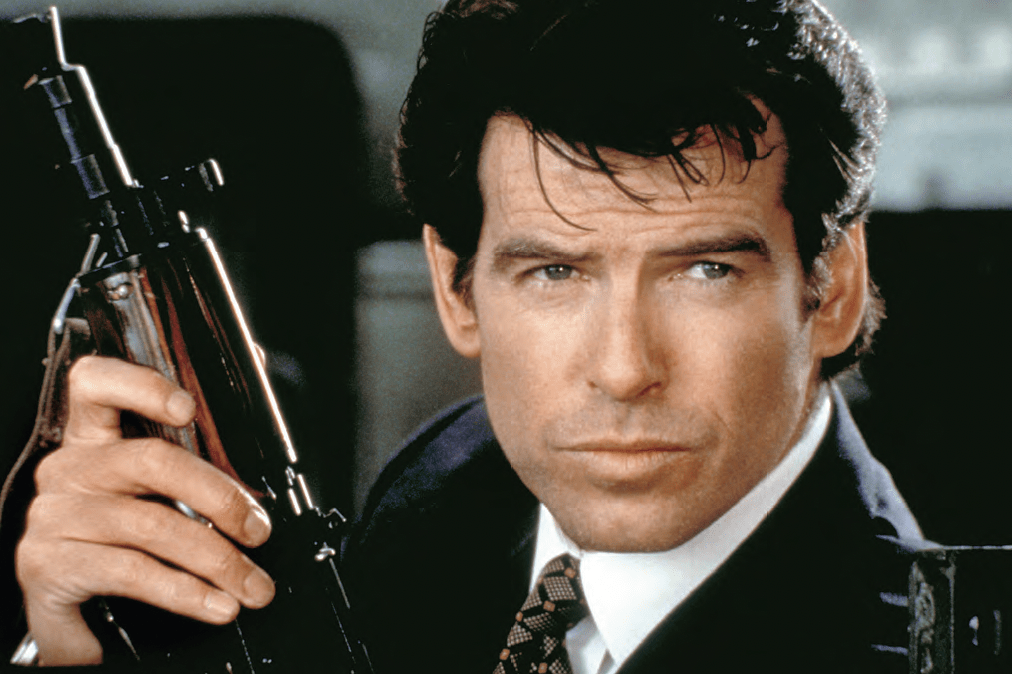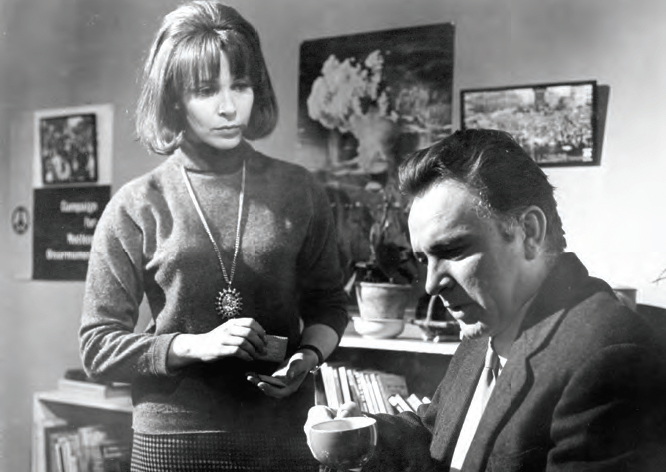
By Betsy A. McLane
Not all actors and writers are spies, but every spy has a bit of actor and writer in their personality. Although actors usually seek the spotlight and spies shrink from it, the ability to imagine potential scenarios and take on different personae is essential for successful actors, writers, and spies alike. Christopher Andrew and Julius Green drive this observation home with detailed, well-researched, and engrossing prose in “Stars & Spies: Intelligence Operations and the Entertainment Business.”
Andrew is Emeritus Professor of Modern and Contemporary History at Cambridge University and is the Official Historian of England’s Security Service (MI5). He is Honorary Air Commodore of 7006 (VR), the Intelligence Squadron in the Royal Auxiliary Air Force, and the author of numerous books and articles. He was a founding editor of the scholarly journal, “Intelligence and National Security,” which has been called the premier journal in the (perhaps surprising) academic field of intelligence studies. Green is a writer and producer of over 200 plays, circus entertainments, and musicals. Known as an entertainment historian, Green also wrote the books “How to Produce a West End Show” and “Agatha Christie: A Life in the Theatre.” The collaboration of these two widely acclaimed men resulted in “Stars and Spies,” the first book to make clear the historical connections between spying and the entertainment industry. It is peppered with footnotes from over 20 pages of bibliography and includes an index, but readers should not be put off by such supplementary materials. “Stars and Spies” is a meticulously researched, engrossing page-turner; as in every good spy story, readers will want to know what comes next.
 Spying is a centuries-old occupation, probably vying with sex work to be the world’s oldest profession, and sex takes on hefty roles in stage, screen, and literary works as well as spycraft. The book starts at the beginning with Sun Tzu, a Chinese general living sometime around 544-496 BC, who is the first known writer to discuss intelligence operations as an important part of warfare. In his still-popular book “The Art of War” (which remains Amazon’s No. 1 best-seller in the “Economics and Statistics” category, is required reading at West Point, and in 2006 became a prop for a Paris Hilton photo shoot), Sun Tzu defined three types of spies: the secret informant who shares military information, the penetration spy who gets close to military leaders, and the disinformation agent who provides both true and false details to create confusion. The authors of “Stars and Spies” point out that Sun Tzu’s teachings are most clearly evident today in Vladimir Putin’s Russia.
Spying is a centuries-old occupation, probably vying with sex work to be the world’s oldest profession, and sex takes on hefty roles in stage, screen, and literary works as well as spycraft. The book starts at the beginning with Sun Tzu, a Chinese general living sometime around 544-496 BC, who is the first known writer to discuss intelligence operations as an important part of warfare. In his still-popular book “The Art of War” (which remains Amazon’s No. 1 best-seller in the “Economics and Statistics” category, is required reading at West Point, and in 2006 became a prop for a Paris Hilton photo shoot), Sun Tzu defined three types of spies: the secret informant who shares military information, the penetration spy who gets close to military leaders, and the disinformation agent who provides both true and false details to create confusion. The authors of “Stars and Spies” point out that Sun Tzu’s teachings are most clearly evident today in Vladimir Putin’s Russia.
Andrew and Green title their first chapter “Golden Age: Theatre and Intelligence in the Reign of Elizabeth I” (1558–1603.) This era encompassed the prime of Shakespeare and his literary contemporaries, most notably the rapscallion actor, poet, playwright, and spy, Christopher Marlowe. He was one of many she employed to keep the crown’s Catholic enemies from seizing power. Shakespeare and Marlowe likely collaborated until Marlowe’s violent and still mysterious death, and there are references to Marlowe and to spying in many of Shakespeare’s plays. “Richard III” (1592) is the first to use the word “intelligence” to mean secret information, and at some point, every character in “Hamlet” (1607) is spying on someone else. In the last painting made of Elizabeth, the “Rainbow Portrait,” she is wearing a cloak with a lining covered in images of eyes and ears, “symbolizing the members of her supposedly all-seeing and all-hearing intelligence service.” The Queen’s Men, a traveling theatrical troupe, were among this network; the advantages of using men who could move about the country without suspicion and who had mastered disguise was obvious. The level of detail and documentation that the authors bring to this first 32-page chapter continues throughout the book, creating a fascinating cornucopia of information.

From its decidedly British upper-class view, the book’s chronology continues through 2021. The earliest years of the 20th century saw a wave of panic in England known as the German spy scare. The fear was caused by the sudden and enormous popularity of lurid spy novels and newspaper serials such as “Spies of the Kaiser: Plotting the Downfall of Britain” (1909). Such fictions caused an alarm so fierce that the War Office issued a special committee report stating, “The evidence which was produced left no doubt in the minds of the subcommittee that an extensive system of German espionage exists…” There was no significant network of German spies, nor were there any German plans to invade England. The scare did, however, lead to the establishment of what became the Security Service (MI5) for internal operations and the Secret Intelligence Service (MI6), which collected foreign intelligence.
Espionage activity naturally flourishes during war and political upheaval, and the Boer War (1899-1902) saw the making of the first British spy film, “Shooting the Spy,” shot on a golf course and advertised with the claim that it was filmed “under the supervision of a military officer from the Front.” This one-minute entertainment was described in filmmaker Robert Paul’s catalogue as, “Scene outside a guardroom, with sentry on duty. An escort comes up, with the captured Boer spy, who is eventually shot.” This kind of film parallels Thomas Edison’s and the American Mutoscope and Biograph Company’s staged efforts to “document” the Spanish American War (1898-1901).
“Stars and Spies” offers several examples of women who spied or whose names were associated with spying. When talkies arrived in cinemas, at least three Hollywood stars vied for the title of “most glamorous screen spy.” Greta Garbo (“Mata Hari” [1931]), Marlene Dietrich (“Dishonored” [1931]), and Madeleine Carroll (“I Was a Spy” [1933]) all starred as femme fatales.
Margaretha Geertruida Zelle, whose stage name during her career as an exotic dancer was Mata Hari, is probably the best-known female spy. Along with her sensational dancing, she had a decadent, if not very successful, career as a spy for Germany in World War I. She also at one time claimed to be a double agent working for France, but her main interest seemed to have been seducing military officers and getting money from them. She once stated:
“I love officers. I have loved them all my life…My greatest pleasure is to go to bed with them without thinking of money and then, I like to make comparisons among the different nationalities.”
She did do some ineffectual spy work for Germany in WWI and for that was executed by a French firing squad in 1917. Mata Hari lives on in books, on stage, and in the movies. In 1964, she was played by Jeanne Moreau in the film “Mata Hari Agent H-21,” and in a 1993 episode of the TV show “The Young Indiana Jones Chronicles,” she seduces and takes the virginity of 17-year-old Indy.
Other women were more successful as spies, and “Stars and Spies” details their careers, paying special attention to French singer and dancer Jeanne Bourgeois, stage name Mistinguet. She was the main attraction successively at the Moulin Rouge, Follies Bergère, and Casino de Paris and also starred in 48 silent films. During the First World War, she volunteered to spy for the French army, using her star power to move freely across Europe, gathering information from royalty and high-placed officials. Information she supplied about the location of Germany’s last major attack was key in assuring a French victory.
Operating in the same mode as Mistinguet, African-American star Josephine Baker served without pay for the Free French in World War II, forwarding information, reputedly sometimes written in invisible ink between the lines of sheet music. She had a lifelong allegiance to France, where she found that Blacks were far more accepted than in the US. Along with her risqué stage shows, Baker made more than 10 films, most notably “Zou Zou” (1934) and “Princess Tam Tam” (1935). Her secret intelligence was especially useful in the North African theater of operations and in France’s relations with Moscow. Charles de Gaulle wrote to her praising “[t]he enthusiasm with which you have put your magnificent talent at the disposal of our cause.” For this service, Baker was made Chevalier de la Legion d’Honneur.
Josephine Baker served without pay as a spy for France.
WWII brought expansion of spy networks. Getting the United States to enter the war was critical to saving Britain, and the film “That Hamilton Woman” (1941), produced and directed by Alexander Korda and starring newlyweds Lawrence Olivier and Vivien Leigh, was designed to play a part in that. Korda was sent to Hollywood by England’s Minister of Information specifically to create an “American propaganda film” as part of the effort to win support from the American public. Korda received advice directly from Winston Churchill during production, and it became Churchill’s favorite film. The plot of “That Hamilton Woman,” a love story set against Admiral Nelson’s perseverance and ultimate victory over Napoleon, was meant to parallel Britain resisting Hitler. After the film was released, the U.S. Senate Committee on Foreign Relations called Korda to appear on December 12th, 1941, to answer charges of “inciting the American public to war.” When Pearl Harbor was attacked on December 7th, that hearing was canceled. At the urging of Churchill, Korda became the first film producer to receive a knighthood.
The second half of the 20th century is the period many people think of when they think of the definitive spy. Chapters 12 through 14 cover this era with the same detail and precision that characterize the first 11 chapters. The tremendous advances in spying and in codebreaking that came with the war also created a large espionage infrastructure. The successes at Bletchley Park in breaking the German Enigma code meant that the British had more information about the Germans than any previous combatant had about an enemy. After the coding operations of the U.S. and the U.K. were combined, 3000 to 4000 German signals were decoded each month, along with more from the Japanese and Italians. The Germans never deciphered an Allied code.
The other wartime advance that became a lasting fixture in intelligence work was the double cross. The first to suggest becoming an official double agent was a former WWI RAF pilot who became an actor and then a stunt pilot. He was approached by Germans asking him to provide information on the RAF, and he immediately sought to use this invitation to spy on them for Britian. His career as a spy was a failure, but it brought about the systematic use of double cross through which the British turned around 120 enemy spies into agents for the Allied cause.
The Allies’ uneasy partnership with the USSR that began in 1941 created problems not only during World War II, but after. The 1930s had seen socialist movements sweep Britian and the US. England especially was fascinated with everything Russian, and many highly educated young people there became directly involved with the Communist Party. The Soviets recruited some of these new followers, the most famous being the Cambridge Five spy ring which included one of history’s most successful spies, Kim Philby. Harold “Kim” Philby was a senior officer in Britain’s Secret Intelligence Service, MI6, who became a spy for the USSR in 1934 and spent the next 54 years spying for the KGB. His complex story and that of other Brits who spied for the Soviet Union unfolds in chapter 12, titled “Shaken Not Stirred.”

The authors also probe into the “special relationship” for sharing intelligence that came to exist between the US and Britain during WWII. This espionage program was so secret that not until he took office as president did Harry Truman learn of it. General William Donovan, a veteran of the First World War, where his exploits earned him the nickname “Wild Bill,” was tapped by President Roosevelt to help solidify this “special relationship.” After Roosevelt’s death in 1945, Truman disbanded the Office of Special Services (OSS), America’s WWII espionage agency. Donovan fought to have a new agency for spying established. To get Truman to go forward, Donovan turned to Hollywood and a series of films touting the wartime successes of the OSS. Hollywood studios were eager to jump on this band-wagon, making dramatic thrillers that glorified America’s wartime spies.
The first of these movies (all released in 1946) was “OSS” made by Paramount starring Alan Ladd. Another was “Cloak and Dagger” from Warner Brothers, starring Gary Cooper and directed by Fritz Lang. In this film, scientist Cooper is sent on a mission to destroy a German nuclear weapons factory that is hidden under a brewery. Lang and producer Milton Sperling clashed; Lang banned Sperling from the set, and in retaliation, Sperling cut the final scene of the exploding nuclear brewery. The last of the OSS glorification cycle was the “13 Rue Madeleine” from 20th Century-Fox, which hired Louis de Rochemont, of “The March of Time” newsreel fame, to produce. Directed by Henry Hathaway and starring Jimmy Cagney, Donovan was displeased with what he called its “absurdities.” The first of these was the presence of a mole in OSS, the second was a plot that involved parachuting Cagney into enemy territory, despite the fact that he carried plans for D-Day. When Cagney is captured by the Germans, Allied planes bomb the building where he is being held to prevent him from revealing the plan. Whether any of these pictures influenced Truman is debatable, but Congress approved the founding of the CIA in July 1947.
As the Cold War escalated, the image of the modern-day spy solidified in the public’s mind. Much of it was shaped by the novels of English writers Graham Greene (“The Third Man”), John le Carré (“The Spy Who Came in from the Cold”), and Ian Fleming’s James Bond novels. All three writers had personal professional experience in espionage, and “Stars and Spies” offers absorbing details about both reality and fabrication in their literary lives. Many of their novels were, and continue to be, made into films. It is impossible to write about espionage in the 20th century and the entertainment business without singling out Fleming’s James Bond as a cultural icon. Bond and the actors who play him comprise the gold standard in spy films. His on-screen career has lasted over 60 years, longer even than J. Edgar Hoover’s at the FBI. The book points out that 007’s working style would not be welcome in today’s secret services. In her initial Bond film “Goldeneye” (1995), Judy Dench’s M (a character based on the first woman head of MI5, Stella Rimington), calls Bond “[a] sexist misogynist dinosaur. A relic of the Cold War.” That is certainly true, but fans worldwide are even now impatiently speculating about who will succeed Daniel Craig as 007 in the next Bond movie, due out in 2026.
In “Stars and Spies,” Andrew and Green overhaul history, bringing to light the many connections, both practical and odd, between the entertainment industries and espionage. Few people today consider the fact that the CIA funded the 1954 animated film version of George Orwell’s “Animal Farm,” presented like Orwell intended, as a satire about Joseph Stalin’s USSR. By the early 1960s in Russia, secret KGB advisors were part of the Mosfilm studio teams for every film that touched on espionage or government activities. These and dozens of other remarkable true stories fill the book’s pages, offering readers an accurate and entertaining history of how spies in theater, literature, and film might not always be what they seem.
Stars & Spies: Intelligence Operations and the Entertainment Business
By Christopher Andrew and Julius Green
502 pages
Bodley Head, An Imprint of Vintage, 2021






